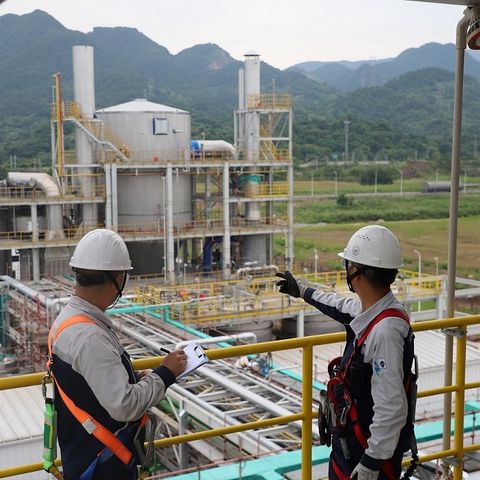A new microbe-based protein factory - worth 250,000 beef cattle

Scarica e ascolta ovunque
Scarica i tuoi episodi preferiti e goditi l'ascolto, ovunque tu sia! Iscriviti o accedi ora per ascoltare offline.
Descrizione
In this podcast, I discuss the alternative protein space with Geoff Bryant, Chief Technology Officer at microbe fermentation company, Calysta. Alternative proteins are all about sourcing protein with less impact...
mostra di piùAlternative proteins are all about sourcing protein with less impact on livestock, people and the planet. These alternatives include insect-based protein, plant-based protein, cellular protein made in a lab from animal cells, and microbe-based protein, Calysta’s own speciality.
It was a good time to catch up with Geoff. This week, the company is commissioning its first commercial-scale production unit, at Chongqing in China, a unit it turned on three weeks ago. The unit will produce up to 1,000 kg of biomass per hour, or 700 kg of crude protein, from methane-eating bacteria. Geoff says that level of output will make it the world’s biggest plant microbe fermentation plant. The company is planning to commission a second, similarly sized unit on the same site in China before the end of the year.
Geoff tries to express that protein production in livestock units, by comparing with the crude protein production of a single beef cow, at 50kg per beast. He estimates the two fermentation units will produce up to the equivalent of 14 cows each per hour, or a quarter of a million cows per year together, all on a site the size of a football pitch.
The company’s initial target market is fish farming. Geoff acknowledges cost challenges, versus premium fish meal and soy. But he says cost reductions will come with scale, as well as operational cost reductions, from running their new plant, adding to this with a second fermenting unit.
At the moment, natural gas is the input, half of which, by weight, the company’s bacteria will convert directly into protein. Other inputs include oxygen; a source of nitrogen; metal salts such as potassium and calcium, and acids. They don’t use sugar – important when you consider that this means they aren’t consuming food to produce protein, unlike many conventional meat supply chains today.
We discussed scale issues, given the size of the $1-2 trillion livestock market that alternative protein companies are seeking to address. Even achieving just 10% of that industry would be a massive challenge, requiring a “ridiculous amount of fermentation capacity and number of new industrial plants”, he says, but a worthwhile target.
Geoff is optimistic that bacteria fermentation can tap into the buildout of renewables, where one problem for variable renewables is storage. He hopes that bacteria fermentation can tap into surplus renewables, for example when solar power is un-needed in the middle of the day, to produce renewable methane, and convert this directly into protein for people. “The success of renewable energy will be the success of our food system too."
Informazioni
| Autore | Gerard Wynn |
| Organizzazione | Gerard Wynn |
| Sito | - |
| Tag |
Copyright 2024 - Spreaker Inc. an iHeartMedia Company

Commenti
Meredith
1 anno fa